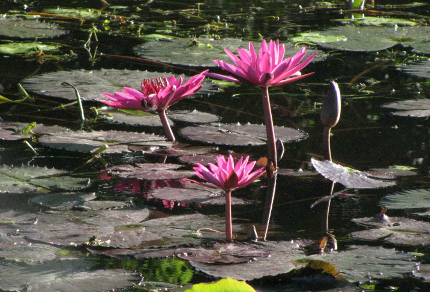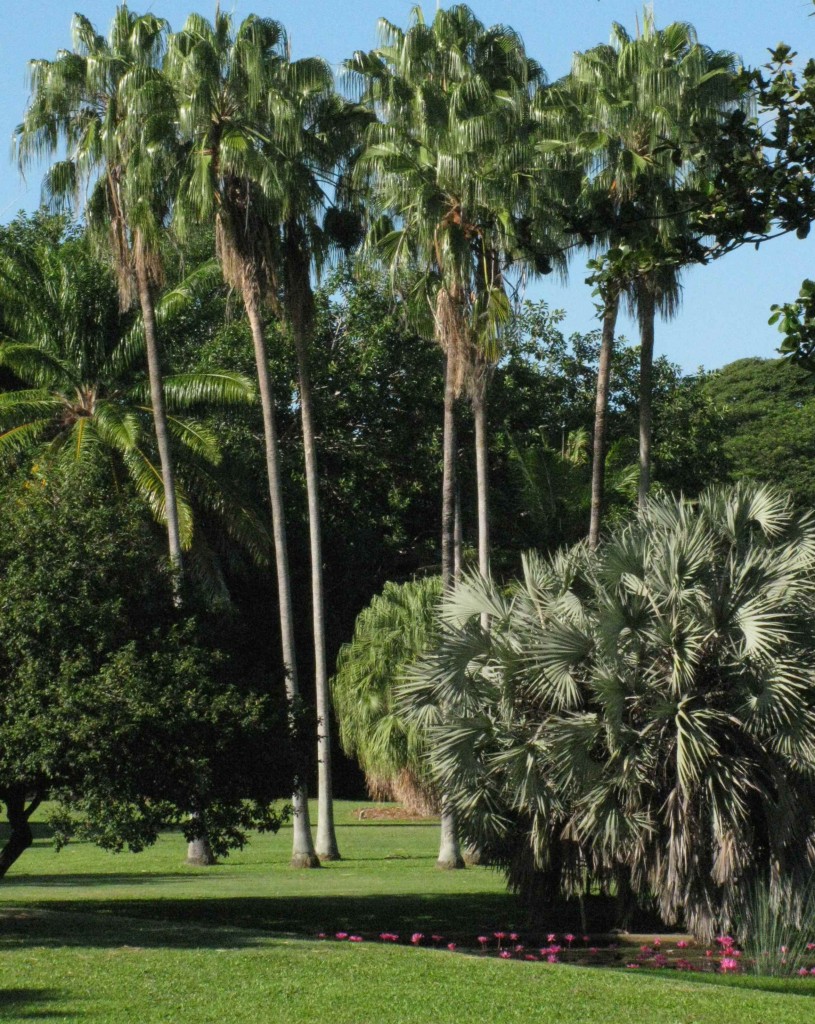
Anderson Park Botanical Gardens, Townsville (© Magi Nams)
In early morning, piles of freshly chipped bark mulch lay steaming in the cool air of Anderson Park Botanical Gardens. Dew spread silver moisture over the park’s spacious lawns decorated with groupings of tall trees. Clumps of bamboo underlain by straw comprised of thin, fallen leaves resembled enormous sheaves of short-stemmed wheat. A spider had spun its orb web on a long strand of silk strung between two palms, the glinting net like a silver dartboard hung in open air. Mallards and black ducks paddling on a pond came begging for handouts, while a dusky moorhen with scarlet head shield preened its slatey feathers amid a bed of gloriously pink water lilies.
Rainbow bee-eaters erupted into flight from branches, soaring and diving in pursuit of insect prey. Masked lapwings paraded on the lawns like grey-and-white-suited security guards wearing yellow face masks. Lorikeets with feathers like rainbows sought nectar and pollen in orange, papery blossoms that flamed over a broad-crowned shade tree. A quartet of Australian white ibises wandered ahead of me through a roughly mowed area that had been a shallow lake on my last visit to the gardens during the wet. Then, mosquitoes had driven me away, but today, with the creekbed and hollows dry, I was spared the pricks of their proboscis needles.
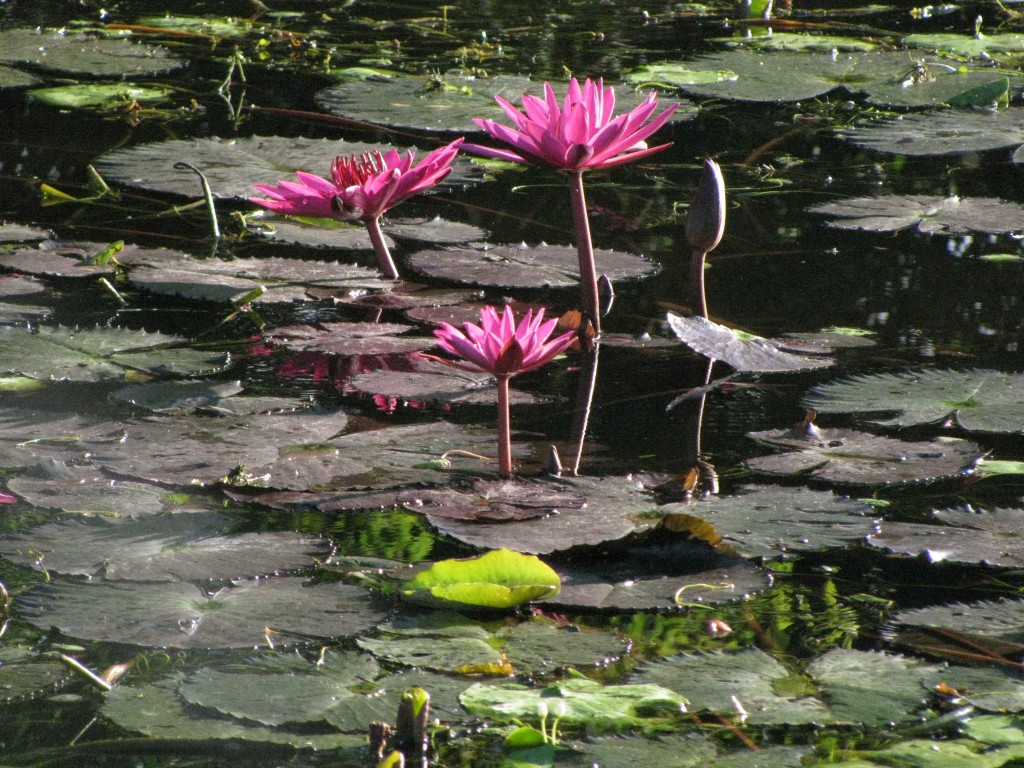
Water Lilies in Anderson Park Botanical Gardens (© Magi Nams)
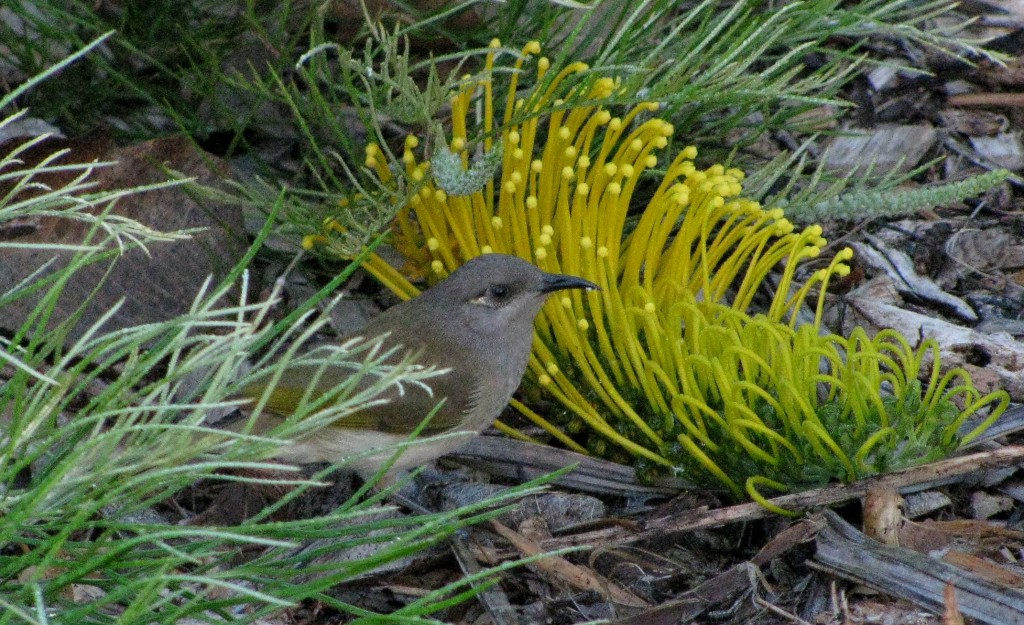
Brown Honeyeater (© Magi Nams)
I watched a brown honeyeater poke its curved beak into blossoms and thought of the seminar I had attended at JCU late yesterday afternoon. The speaker was Susan Laurence, a new faculty member at the Cairns campus of James Cook University. She spoke about how the construction of roads through the Amazon rainforest affects the movements of birds, and hence their possible long-term survival. From her introduction, I learned that the Amazon Basin provides habitat for more than 1000 species of birds, and that over 260 of those are endemics found nowhere else. She described her study area as a mix of rainforest and farms that was home to 370 species of birds, and which was experiencing an increase in the construction of roads to provide access to rainforest products such as bush meat.
Dr. Laurence explained that the incredible avian diversity at her site (nearly half of Australia’s species total) was the result of birds searching for food in very specific locations within the rainforest. This is what ecologists call tight niche partitioning, that is, dividing up the labour of life on a fine scale. On a large scale, some kinds of birds at Dr. Laurence’s research site foraged on the ground, while others foraged in the understory, mid-canopy, or upper canopy of the rainforest. Within those broad divisions, finer divisions occurred, with some species feeding only on tree trunks, and others feeding only in the outer branches, and so on.
Using mist nets, which are long, fine-mesh nets used to capture small birds for identification, Dr. Laurence sampled the numbers and kinds of understory birds found 10, 70, and 130 metres from the forest edge adjacent to road cuts. She sampled three kinds of roads with increasing amounts of vegetation on their verges – cleared, intermediate regrowth, and tall regrowth. Her results indicated that insect-feeding birds avoided the roads, and that only birds that normally inhabited forest edges or clearings would cross the roads having cleared verges. As the amount of vegetation growing beside roads increased, more kinds of birds crossed over from one side of a road to the other, but even with tall regrowth edging roads, some species were inhibited from crossing.
Dr. Laurence concluded that even small forest roads exert what she called ‘an environmental influence’ three times their cleared area. She stated that roads constructed for logging and colonization are creating 10,000 kilometres of new forest edges (which act as barriers to bird movement) every year. Thus, even before massive areas of Amazonian rainforest are cleared, road construction effectively causes bird populations to become fragmented, that is, isolated into smaller populations blocked from other populations by barriers.
Two weeks ago, Vilis, Janis, and I bushwalked that greasy old logging road in the Misty Mountains in bouts of pouring rain, dodging encroaching palms and wild ginger and scanning the track for snakes. We didn’t see many birds, and I wonder now how much the mere presence of that man-made slice through the North Queensland rainforest disrupted the local bird populations, and when – if ever – that disruption will heal.
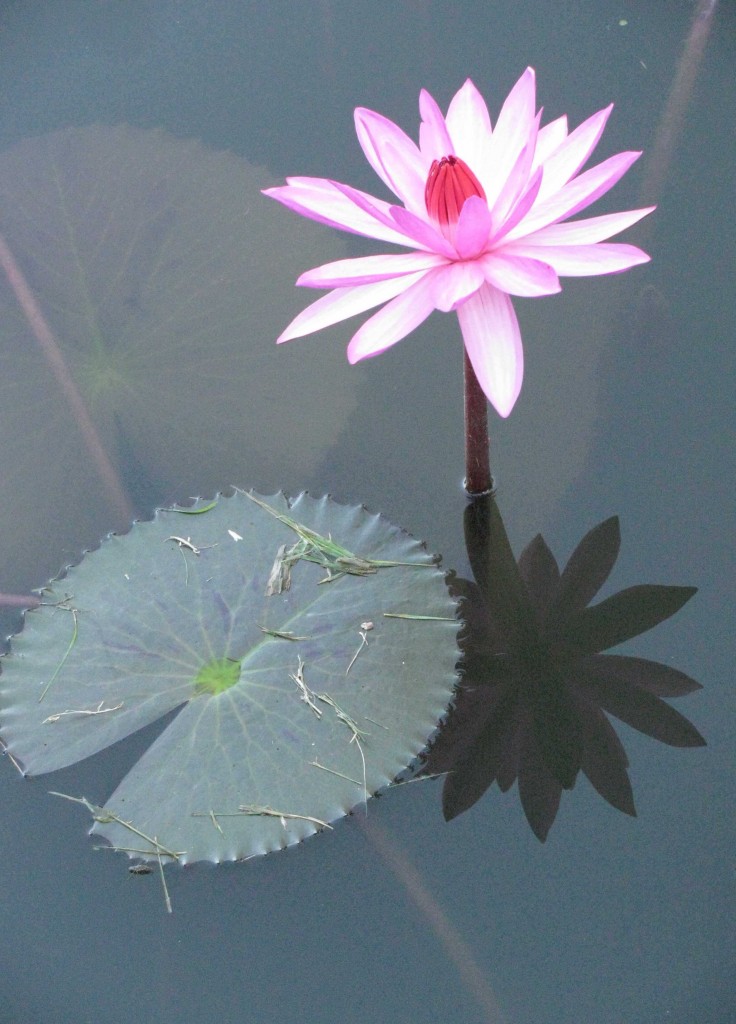
Water Lily at Anderson Park Botanical Gardens (© Magi Nams)
Today’s birds: white-gaped honeyeater, rainbow lorikeets, magpie-larks, masked lapwings, mallards, Pacific black ducks, blue-winged kookaburra, dusky moorhen, nutmeg mannikins, rainbow bee-eaters, brown honeyeater, Australian white ibises, Australian magpie, helmeted friarbird, yellow honeyeater.

